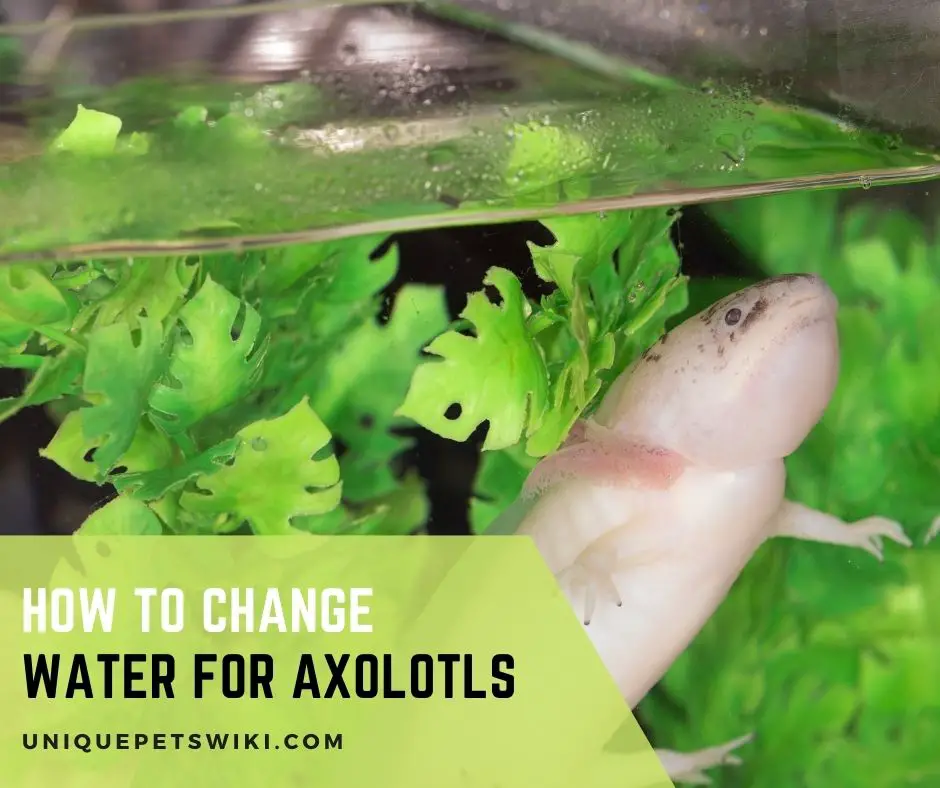As a new axolotl owner, you may be wondering how to change axolotl water.
Axolotls require special care and need a specific water parameter to stay healthy. However, they produce lots of waste which can affect the water quality in their tank.
Therefore, it is crucial that you change their water regularly to help ensure their water parameter is at optimal range.
It is best to change 20% of the water in your axolotl’s tank 3 times per month and 50% of the water once every month.
However, how often you change your axolotl water will depend on the tank setup, the number of axolotls in the tank, the presence of a filter, etc.
This article will help guide you on how to change water for axolotls, the type of water to use, and how often you can change their water.
Contents
How Do I Know When to Do a Water Change?
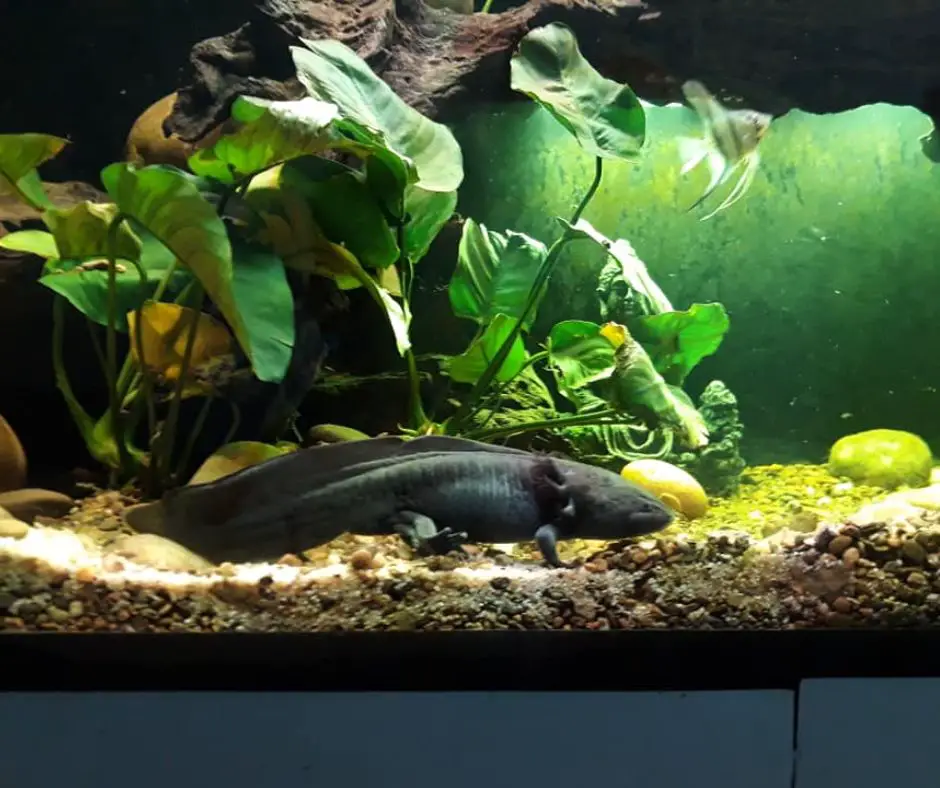
Generally, you will need to change your axolotl’s tank water more if the tank is new with no substrate, live plants, or filter.
This is because there is nothing in the tank to help keep the water parameter at the ideal level.
However, you can determine that your axolotl’s tank requires a water change by testing the water with a Water Testing Kit.
The test will help determine the water quality level and gives you an insight into when to change the water.
The main water quality parameter you should be worried about is the ammonia and nitrite.
They should not be present in your axolotl tank, and once they start to show in your water quality test, then it is time to change the water and get them back to 0.
You should also test for the pH of the water. The ideal pH for axolotls is between 7.4-7.6, and you should be ready to change the water if the pH level is not at the ideal level.
However, it is a good practice if you can change your axolotl’s water daily (about 10-20%) if you have enough time.
Here is an article that shows the ideal water parameter level for axolotls that you should aim to achieve.
How Much Water to Change at Once
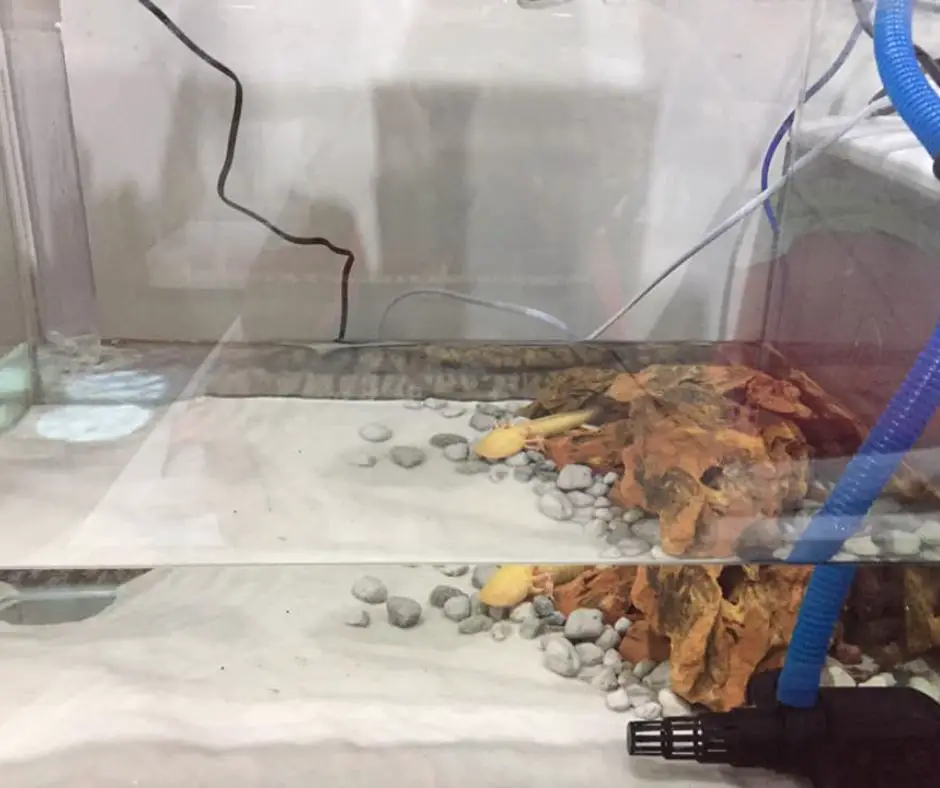
It is recommended that you change about 20%-30% of your axolotl’s water 3 times per month and then change 50% of the water once a month.
Making these water changes will help remove harmful bacteria, reduce ammonia levels, and make your axolotls live comfortably in their tank.
However, you should avoid changing 100% of the water in their tank. This is because changing all the water in their tank will kill off all the beneficial bacteria in the tank.
API Water Test Kit
- Contains one (1) API FRESHWATER MASTER TEST KIT 800-Test Freshwater Aquarium Water Master Test Kit, including 7 bottles of testing solutions, 1 color card and 4 glass tubes with cap
- Helps monitor water quality and prevent invisible water problems that can be harmful to fish and cause fish loss
- Accurately monitors 5 most vital water parameters levels in freshwater aquariums: pH, high range pH, ammonia, nitrite, nitrate
- Designed for use in freshwater aquariums only
- Use for weekly monitoring and when water or fish problems appear
Last update on 2022-12-30 / Affiliate links / Images from Amazon Product Advertising API
How Often To Change Water For Axolotls
How often you will need to change the water in your axolotl’s tank depends on several things. Some of them are:
- Tank size
- Filter strength
- Your axolotl size and age
- How often do you feed your axolotls
- The number of axolotls in the tank.
For instance, housing more axolotls in the tank will take up much space, making the tank more condensed and requiring frequent water changes.
Furthermore, baby axolotls will need frequent water changes because they produce lots of waste and are kept in a group.
Another thing is that you will need to change the water in your axolotl’s tank regularly if you don’t use a filter or the filter is not strong enough for the tank.
However, if you have a large tank with a working filter, your axolotls will be more comfortable, and you don’t need to do water changes frequently.
How To Change Water For Axolotls
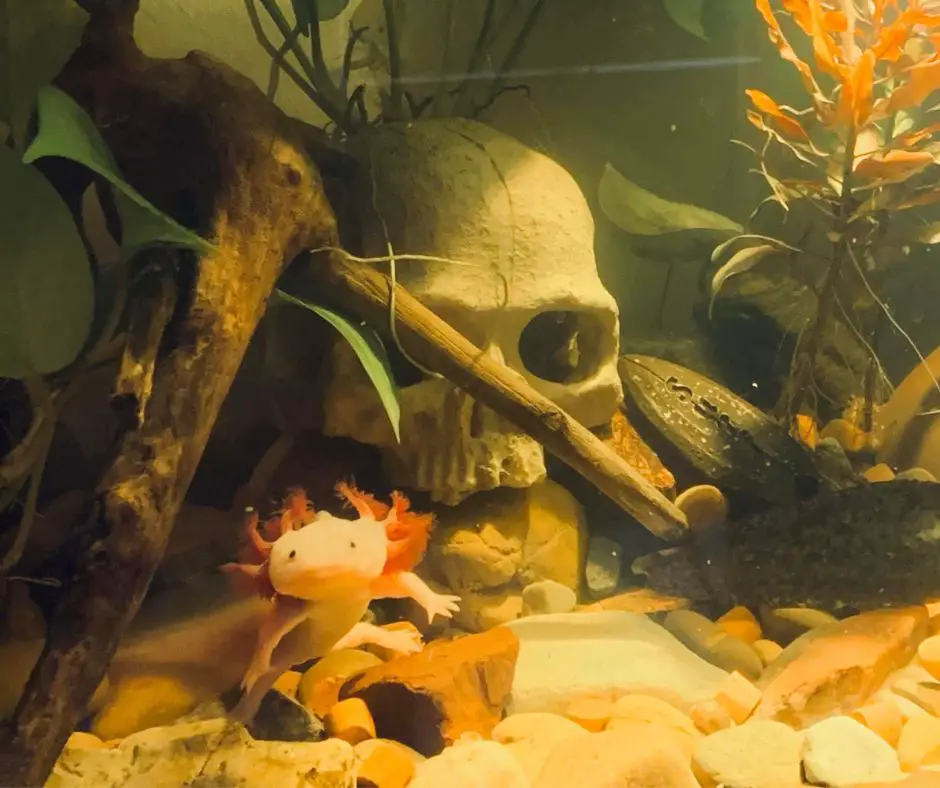
As stated before, changing water will help keep the water in the tank clean without harmful chemicals or potential debris.
This will then help to make your axolotls healthier and happier in their tank. The step-by-step guide to changing axolotls’ water is stated below.
- Step 1: Prepare water
- Step 2: Transfer your axolotl
- Step 3: Remove Some of the Water
- Step 4: Add the Fresh Water
Step 1: Prepare Water
The first thing to do is prepare the water you want to use to replace those in the tank. As a rule of thumb, if the water is good for drinking, then you can use it for your axolotls.
However, some water sources like tap water contain chemicals and other stuff to clean the water, which can harm your axolotls.
Therefore, you will need to first condition tap water with a water conditioner to help remove chlorine from the water.
You can also use bottled water for your axolotl tank. However, it is quite expensive, and it does not contain some nutrients that tap water has.
The amount of water you will need to prepare will depend on your aquarium size. You can then calculate the 25%-30% of the tank to prepare.
For instance, you will need to change the water in a 20-gallon tank with 5 gallons.
However, it is recommended that you prepare more water than expected. Then allow the tap water to sit for 24-48 hours to help de-chlorination.
Step 2: Transfer Your Axolotl to A Temporary Tub
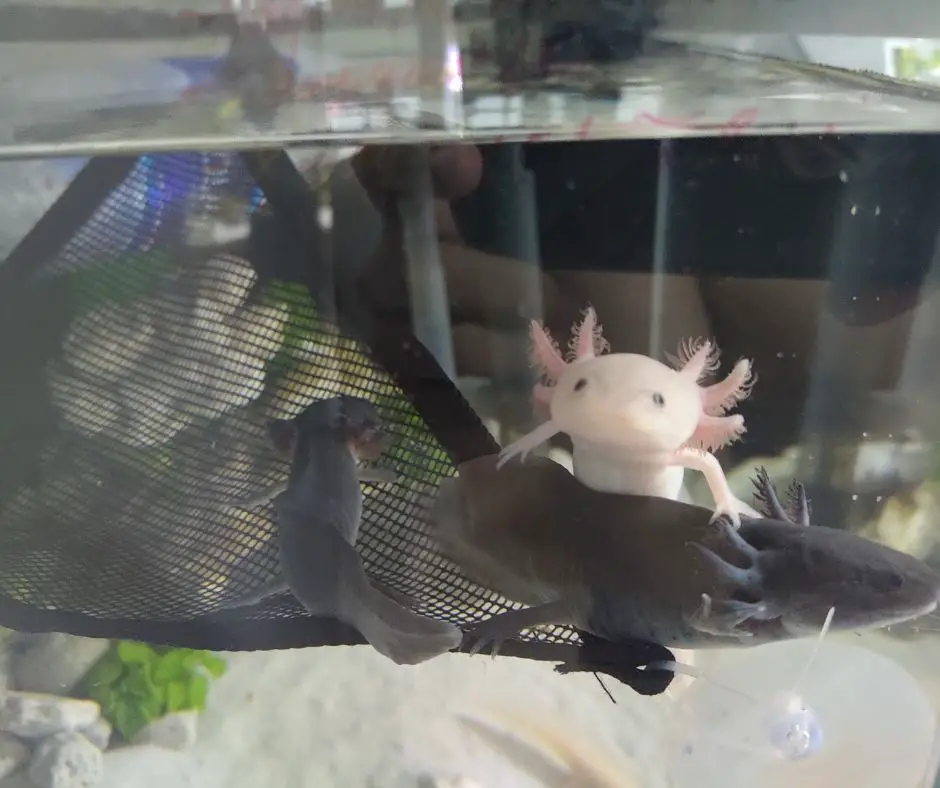
You may consider transferring your axolotl to a temporary tub based on the amount of water change you plan to do.
Therefore, you may not need to transfer your axolotl if you want to do a 20% water change.
However, you will need to move them to a temporary tub if you do more than a 20% water change.
You can use a big net to remove your axolotl from their tank to another tank to help ensure they don’t jump.
Step 3: Remove Some of the Water
The next step is to remove the water from your axolotl’s tank. You can do a smaller water change with a handheld siphon or a few feet of silicone tubing.
However, you will need a submersible aquarium pump connected to some tubing or a python for large water changes.
The siphon will help to suck out the water into a bucket. On the other hand, you will need to put a wide-tube-shaped end of a vacuum underwater and tip it sideways to help fill the water.
The other end of the vacuum will then drain the water into a bucket.
While you are draining the water from the tank, you will also be cleaning the waste.
You can then drain the water to the desired percentage (20-50%) depending on if you are doing a weekly or monthly water change.
Laifoo Aquarium Siphon Vacuum Cleaner for Fish Tank Cleaning Gravel & Sand
- FUNCTION --- Easy to control, convenient to siphon fish faeces, impurities, turbid water out of fish tank.
- 5 Feet HOSE --- Made from clear & elastic plastic. Makes it more durable and anti-kinking. Harmless to fishes & No peculiar smell.
- GRAVEL TUBE --- Sinkable, with a detachable filter screen inside. Will not disturb fish or decor when it's working.
- SIPHON BALL --- All you need to do is to pinch it several times, water will flow out automatically. Without striking a blowing.
- WARRANTY --- For 3 months after the date of purchase, we take care of all quality-related issues with a FREE replacement or refund. If you have any questions, do not hesitate to contact our professional after-sale service.
Last update on 2022-12-29 / Affiliate links / Images from Amazon Product Advertising API
Step 4: Add The Fresh Water
The next thing to do is add the prepared water into the tank. All you have to do is check if the prepared water equals the amount of water removed.
You can then check the water parameters to help ensure it is now at an ideal level.
You can then add your axolotls back to the tank if you remove them.
Note: ensure the water is free from soap, chemicals, or other harmful substances when filling your container with new water.
What Happens If You Don’t Change Water
Generally, axolotls produce lots of waste. If you don’t change their water, there will be an accumulation of waste and leftover food in their tank.
This will lead to ammonia and nitrite levels if you don’t change your axolotl’s water.
This can then be fatal to your axolotl because they require zero ammonia and nitrite levels to survive. Another thing is that old tank syndrome can happen if you don’t do regular water changes.
This is when the pH in the water starts to go down and become acidic, which can cause stress to your axolotls leading to health problems.
Final Sentences
Axolotls require a specific water parameter that you need to maintain to keep them healthy and active.
This is why changing their water is important to keep it clean and safe. The good thing is that changing the axolotl’s water is easier than you think.
We hope this article provides everything you need to know about axolotl water change. You can message us in the comment section below if you have any questions or comments.
